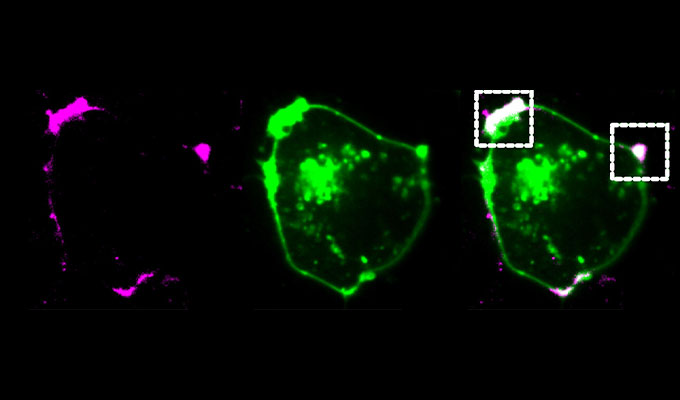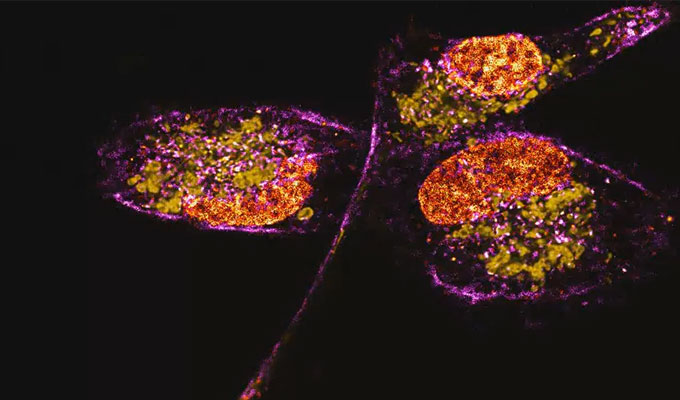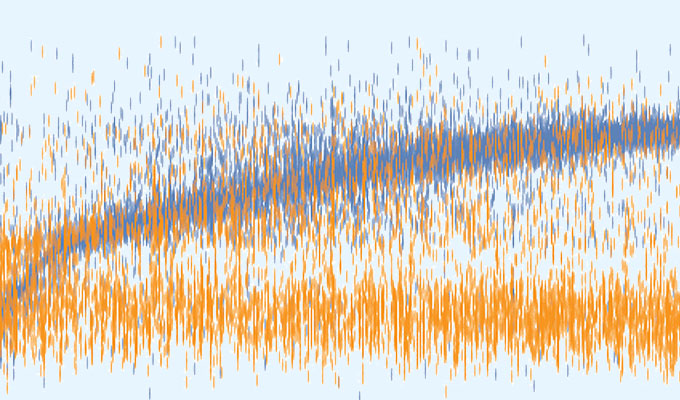Exploring RNA Dynamics: Innovations in Nanopore-based Native RNA Sequencing
Speaker: Morghan Lucas Moderator: Ivan Milenkovic
Online live: Sep 17, 2024 12:00 PM EST Posted: Oct 10, 2024 Views: 7006
Abstract
The study of RNA dynamics has emerged as a crucial area of research, offering insights into the intricate workings of cellular processes and their dysregulation in various diseases. Traditional RNA sequencing methods, while valuable, often present limitations in capturing the true complexity of RNA molecules. However, recent innovations in nanopore-based native RNA sequencing have revolutionized our ability to explore RNA dynamics with unprecedented accuracy and depth.
For example, Nano-tRNAseq is a groundbreaking nanopore-based method enabling simultaneous quantification of transfer RNA (tRNA) abundances and modifications at single-molecule resolution. By modifying the direct RNA sequencing (DRS) platform, enhanced base calling and mapping accuracy is achieved, capturing significantly more reads than previous methods. The application of Nano-tRNAseq revealed dynamic tRNA modification patterns in response to environmental exposures and genetic alterations. Despite limitations in identifying specific modification types, Nano-tRNAseq promises to revolutionize the study of tRNA function and its role in various contexts, including cancer and stress responses.
This webinar will delve into the advancements in nanopore-based native RNA sequencing, offering a comprehensive overview of its principles, methodologies, and applications.
Highlights:
- Development of EpiNano, the first tool to detect m6A in native RNAs using basecalling errors in nanopore direct RNA sequencing.
- Detection of rRNA modifications using basecalling errors and signal intensity, and characterization of novel rRNA modifications using nanopore direct RNA sequencing.
- Characterization of yeast non-coding RNA modifications and development of NanoRMS, a software to quantify RNA modification stoichiometry in direct RNA sequencing data.
- Development of the first, and currently only available nanopore direct RNA sequencing multiplexing tool, DeePlexiCon, and SeqTagger, a new, unpublished RNA multiplexing tool that is more precise, faster, and can barcode up to 100 samples.
- Development of Nano-tRNAseq, a nanopore direct RNA sequencing method to simultaneously quantify tRNA abundance and modifications.
Speaker

Morghan Lucas, Ph.D.
Co-lead R&D, MGZ Medical Genetics Center
Dr. Morghan Lucas is the Co-lead of Research & Development - Technical Strategy at MGZ Medical Genetics Center in Munich, Germany. She obtained...
View more
Moderator

Ivan Milenkovic, Ph.D.
Postdoctoral researcher, Centre for Genomic Regulation
Dr. Ivan Milenkovic is a postdoctoral researcher at the Novoa Lab, where he also earned his doctoral degree on "Ribosome Heterogeneity: Biological ...
View more
References
Lucas MC, Pryszcz LP, Medina R, Milenkovic I, Camacho N, Marchand V, Motorin Y, Ribas de Pouplana L, and Novoa EM. Quantitative analysis of tRNA abundance and modifications by nanopore RNA sequencing. (2023). Nature Biotechnology. DOI:10.1038/s41587-023-01743-6
Lucas MC and Novoa EM. Exploring tRNAs and their modifications and crosstalk using Nano-tRNAseq. (2023). Nature Biotechnology. Research briefing. DOI:10.1038/s41587-023-01755-2
Begik O, Lucas MC, Pryszcz LP, Ramirez JM, Medina R, Milenkovic I, Cruciani S, Liu H, Santos Vieira HG, Sas-Chen A, Mattick JS, Schwartz S, Novoa EM. Quantitative profiling of pseudouridylation dynamics in native RNAs with nanopore sequencing. (2021). Nature Biotechnology. DOI:10.1038/s41587-021-00915-6
Lucas MC and Novoa EM. Long-read sequencing in the era of epigenomics and epitranscriptomics. (2023). Nature Methods. DOI:10.1038/s41592-022-01724-8
Liu H, Begik O, Lucas MC, Ramirez JM, Mason CE, Wiener D, Schwartz S, Mattick JS, Smith MA, Novoa EM. Accurate detection of m6A RNA modifications in native RNA sequences. (2019). Nature Communications. DOI:10.1038/s41467-019-11713-9
Smith MA, Ersavas T, Ferguson JM, Liu H, Lucas MC, Begik O, Bojarski L, Barton K, Novoa EM. Molecular barcoding of native RNAs using nanopore sequencing and deep learning. (2020). Genome Research. DOI:10.1101/gr.260836.120
Diensthuber D, Pryszcz LP, Llovera L, Lucas MC, Delgado-Tejedor A, Cruciani S, Roignant JY, Begik O, and Novoa EM. Enhanced detection of RNA modifications and mappability with high-accuracy nanopore RNA basecalling models. (2023). bioRxiv. DOI:10.1101/2023.11.28.568965
Milenkovic I, Santos Vieira HG, Lucas MC, Ruiz-Orera J, Patone G, Kesteven S, Jianxin W, Feneley M, Espadas G, Sabidó E, Hubner N, van Heesch S, Voelkers M and Novoa EM. Dynamic interplay between RPL3- and RPL3L-containing ribosomes modulates mitochondrial activity in the mammalian heart. (2023). Nucleic Acids Research. DOI:10.1093/nar/gkad121
Do you have a question about this webinar?
Post your question, and we'll invite the webinar speaker to respond. You're welcome to join the discussion by answering or commenting on questions ( Note: Not all questions, especially those not directly relevant to the webinar topic, may be answered by the speaker. ).
Tips for asking effective questions
+ Description
Write a detailed description. Include all information that will help others answer your question.
24 Q&A
What are the modifications that currently can be detected correctly with this method apart from m6A?



